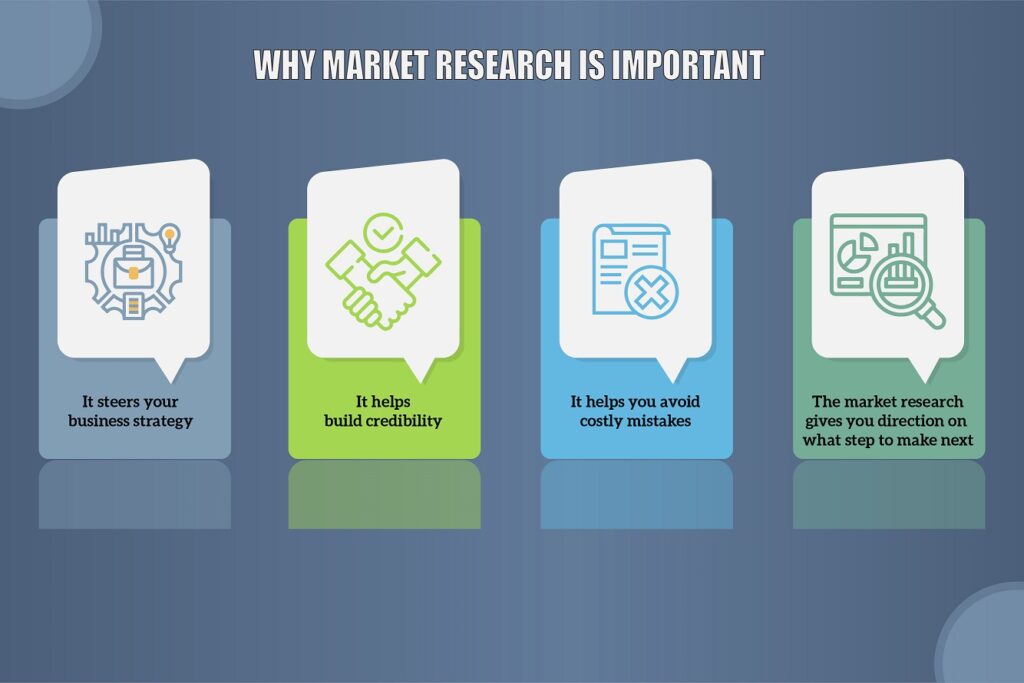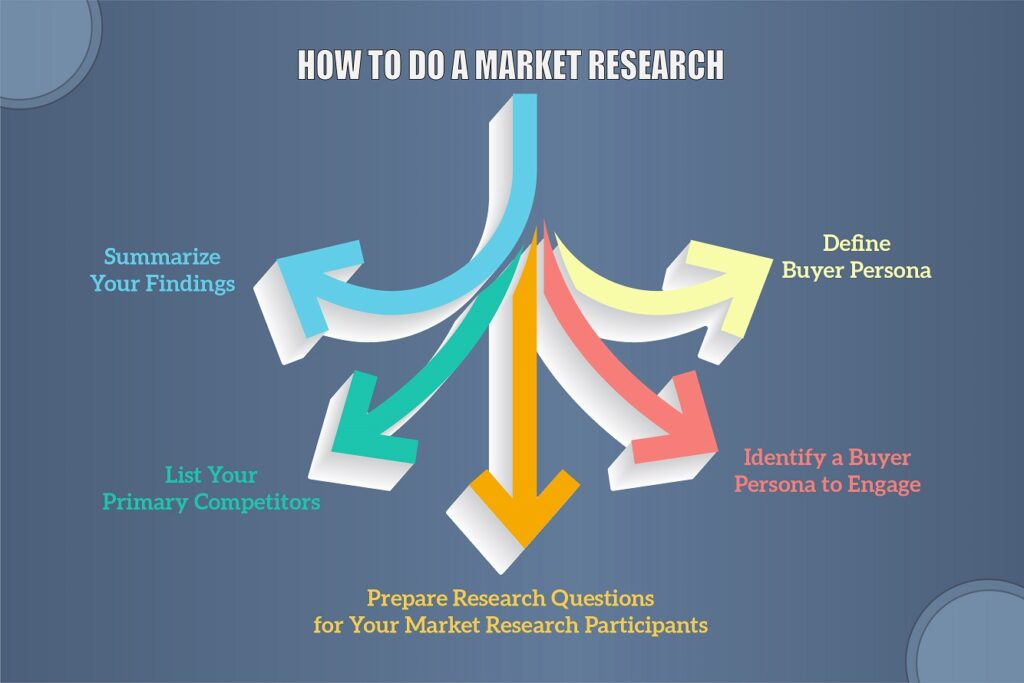Consumers hold a lot of power in today’s market. They can make purchase decisions entirely on their own after researching your product or service. Rather than asking for information from one of your sales reps, they are more likely to read online reviews or seek referrals from members of their networks.
With this in mind, you need to develop a marketing strategy that complements consumers’ research products and makes purchase decisions. To achieve this feat, you need to understand who your buyers are and what influences their purchase decisions. This comprehensive guide will show you how to do detailed market research to better understand what your customers require.
What Is Market Research and How Does It Help You?
Market research comprises acquiring and analyzing data about customers, rivals, and the effectiveness of your marketing campaigns. It helps organizations to come up with strategies that address issues such as:
- How ample the market opportunity is for their products or services
- How their brand stacks up with those of competitors
- The demographics that are most likely to embrace their products or services
- The best advertising strategy that will resonate with their consumers
Why Market Research Is Important

In today’s market dynamics, making decisions purely on instincts comes with high risk-you could misjudge your target audience by creating a product or service that’s not tailored to address their needs. Market research can save you from such troubles. Here are some of the benefits you’ll gain from it:
- It steers your business strategy: Market research will provide you with the essential validation that your product or service is viable or a warning bell that you need to go in a different direction.
- It helps build credibility: A market research arms you with the facts to back up your claims or arguments on why you should adopt a product, service, or marketing strategy.
- It helps you avoid costly mistakes: According to Clay Christensen (a Harvard Business School Professor), new product launches fail 95% of the time. As a result, businesses are losing a lot of money. Market research will give you the information you need to ensure your product is one of the successful 5%.
- The market research gives you direction on what step to make next: It provides you with the necessary data about evolving consumer needs and market trends.
When to Use Market Research

Market research comes in handy in numerous scenarios, including:
- Before expanding or starting a business: It helps business leaders determine the feasibility of new business opportunities.
- Monitoring competitors: Market research can help you monitor economic and industry trends so that you can develop strategies to gain an edge over your competition.
- Testing a new product or service: You can test how viable your product or service is by bringing it to the market and monitoring how consumers respond to it. The results will help you determine the best audiences, places, and times to distribute the product or service.
- When you want to create brand awareness: This research will help you determine how much consumers know about your brand and whether they recognize it.
- Identifying customer loyalty and satisfaction: This study will show you how to attract customers to make repeat purchases by identifying what motivates them.
Types of Market Research
Market research is a broad term that encompasses various methods of data collection. Primary and secondary research are the two main types of market research firms can use to determine buyers’ pain spots and desired solutions.
Primary vs. Secondary Research
- Primary Research: This is the pursuit of first-hand data about your target market and the audience within it. Primary market research is valuable when you want to establish buyer personas and segment your market. The data collection methods for primary research include focus groups, surveys, observation, and interviews.
- Secondary Research: This entails the collection, consolidation, and summarizing of data that already exists. For instance, digging into the US census population statistics is secondary research. The primary sources of secondary market research are public, internal, and commercial sources.
How to Do a Market Research
Below are the steps you need to take when conducting market research:

Define Buyer Persona
Before you can investigate how customers in your sector make purchasing judgments, you must first comprehend who they are. Buyer personas come in handy in this situation. Buyer personas are the generalized, fictional representations of your customers that help you visualize them and streamline your communication and products/services to suit them. Some of the critical characteristics to consider when defining buyer personas include age, location, gender, job title, income, and significant challenges.
Identify a Buyer Persona to Engage
Upon defining your buyer persona, you can use that information to identify a group to do your market research with. To better understand your target consumers’ difficulties, characteristics, and purchasing habits, make sure the group comprises a representative sample of them. You can find the right group of people by selecting people you’ve recently interacted with and assembling a diverse group of people.
Prepare Research Questions for Your Market Research Participants
The best way of ensuring that you get the most from your research is to be prepared with the right research questions. Create a guide, whether it’s for an online survey, focus group, or phone interview. Doing so will help you ensure that you cover all of the probing questions promptly.
List Your Primary Competitors
List your major competitors-remember that listing your competition isn’t always as simple as company A versus company B. There are times company divisions may compete with each other. For instance, Apple Music competes with Spotify over its music streaming. The products or services of the competitors you list should overlap with yours to better understand ways to gain an edge in the industry.
Summarize Your Findings
Compile everything you’ve gathered from the research so that you can quickly determine actionable results from the findings. Try using a presentation software report, as it will make adding diagrams, call clips, or quotes easier. Based on what your research is focused on, you’ll be able to determine customer buying habits, gross margin, cash flow cycles, among other things.
Market Research Reports
A market research report is a document that discloses the characteristics of your ideal customers, their perception of your product or service, their buying habits, and the list of your consumers. After conducting your market research, your marketing research report should paint a clear picture of the following issues:
- Give you a better understanding of your customers and target audience
- Help you spot business opportunities
- Minimize the risk of your investment
- Facilitate data-driven decision making
Register With TheExpertCafé Today
At TheExpertCafe`, we take pride in helping marketers gain valuable and unique insights that help leverage their performance in today’s savvy market. It would be best if you let your expertise count with impeccable marketing decisions. Join our ever-growing marketing community today, and be sure of the latest marketing innovations, strategies, and much more.




